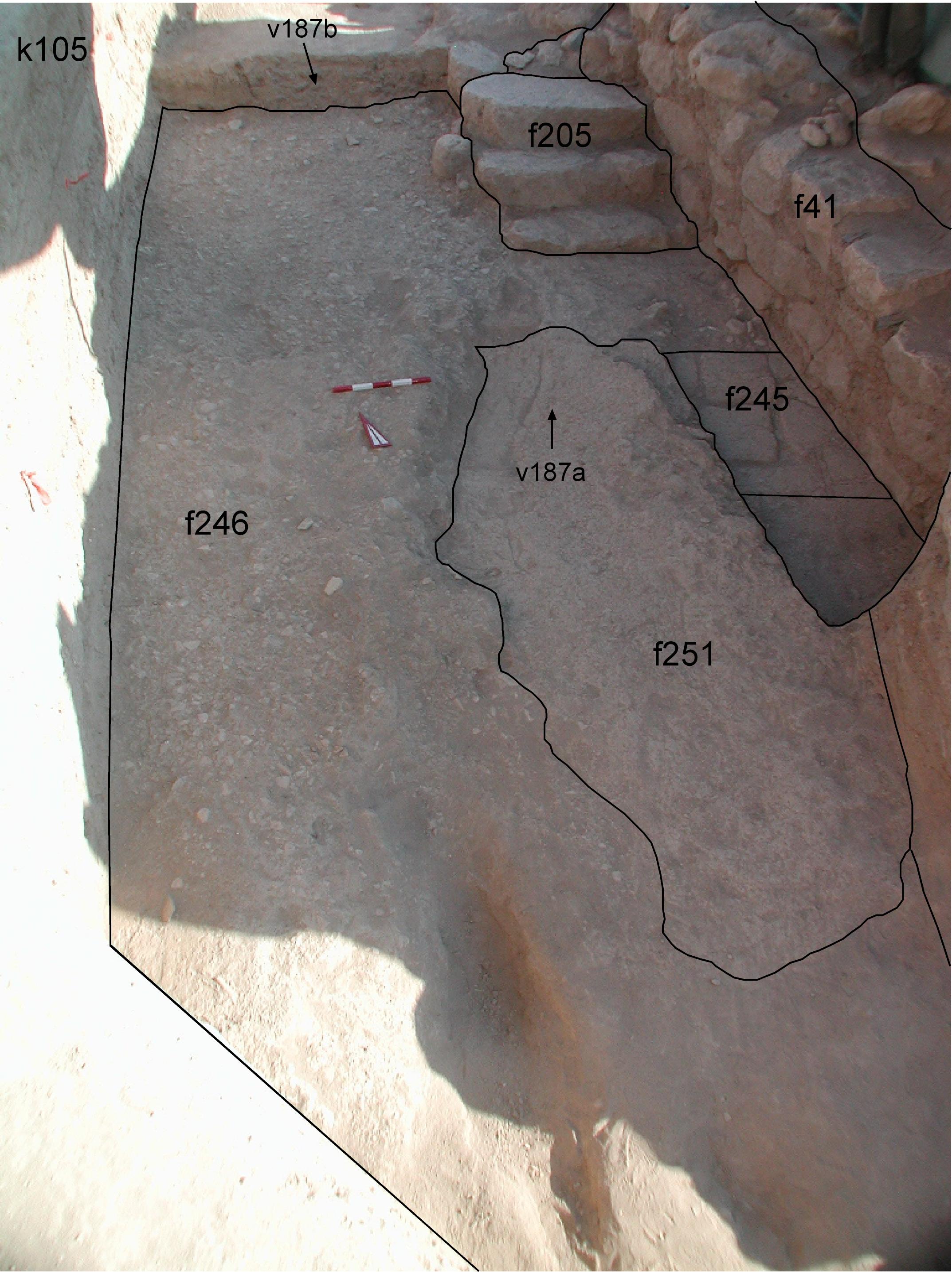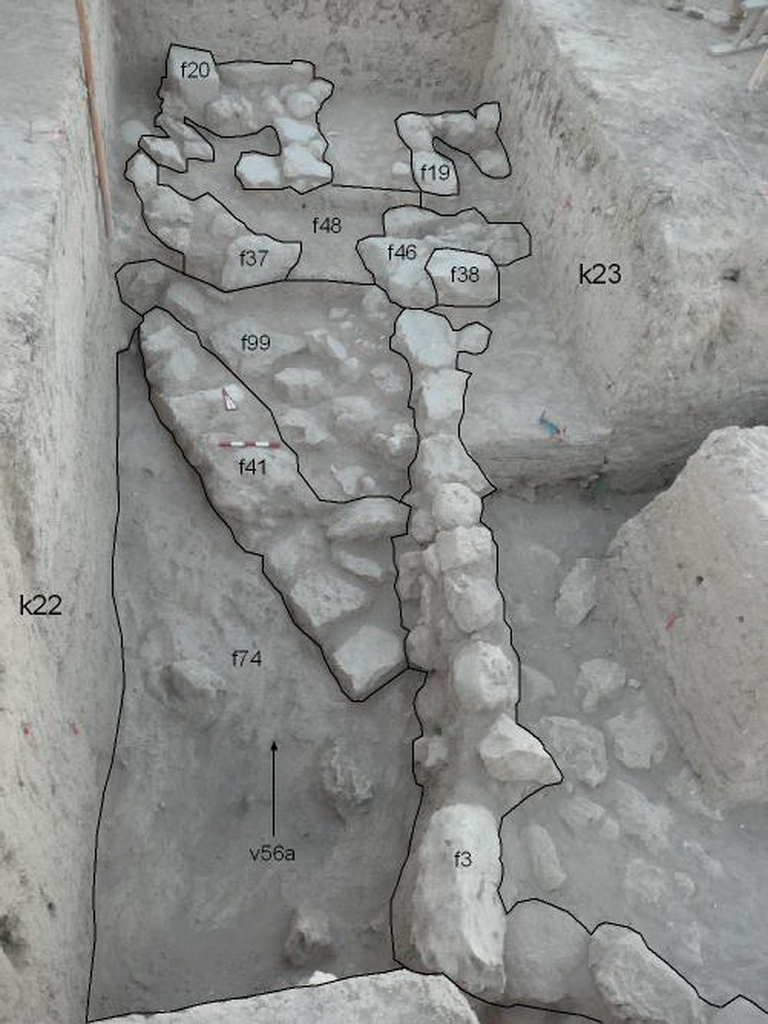Back to top: Phase 7fJ5B within Unit J5
Stratigraphy
Phase 7f comprises four strata in the Early Mittani period. At this point in time this part of the temple mound was not the focus of sacred activity, which was rather conducted to the south and east. The secular nature is confirmed by items such as a cache of grinding stones and a sling-ball manufacturing facility. Control of water erosion was the main problem that motivated construction of several unique features.
Stratum 180 marks the first early Mittani efforts to control erosion along the face of the revetment wall. A large stone, f266 was laid on accumulations near a point where the revetment wall turns to the east. Later, a brick wall was built to contain a settling basin ^eps2.
|
|

|
As erosion and deposition continued, activities in Stratum 178 focused on building a stairway, ^strc2, to access the top of the revetment wall, f41, from floor, f246. Three large cut stones, f205, were laid abutting the revetment wall to make the stairway.
Erosion and deposition continued in Stratum 176. Floor, f246, was covered by another layer of accumulation, which in turn was partially eroded.
|
|

|
|
The final early Mittani attempt to control water damage was the installation of a packed mud glacis, f74, to protect the revetment wall, f41. In the mid-Mittani period damage continued as documented in Stratum 161.
|
|

|
Back to top: Phase 7fJ5B within Unit J5
Typology
Ceramics dated to the Mitanni period. Items included a chache of sling balls, a8, a cache of grindstones, a12, and also numerous clay and lithic artifacts.
Back to top: Phase 7fJ5B within Unit J5